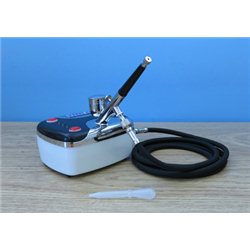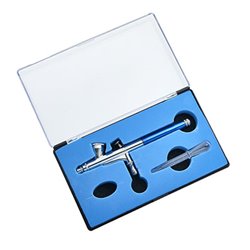The position of the signal box in relation to a signals gantry can vary depending on the specific layout design and...
No products
Product successfully added to your shopping cart
There are 0 items in your cart. There is 1 item in your cart.
Search Tips
Christmas and New Year
Due to public holidays, orders will be next dispatched on Monday 29th.
If you select next day delivery at checkout, please note deliveries are not made on New Year's Day or Sundays.
The shop in Sandown is closed on Saturday 27th December and will reopen on Tuesday 30th December.
Tuesday 30th: 10am to 4.30pm - Wednesday 31st: 10am to 2.30pm - Thursday 1st: closed - Friday onwards: 10am to 4.30pm.
Do I need a compressor to use an airbrush?
Airbrushes can be somewhat mysterious to anybody who doesn't already own or have experience using one. Probably the biggest and most unfortunate surprise for any modeller is the discovery that when buying an airbrush, it often doesn't include the compressor. But do you really need one?
Well, yes and no is the non-committal answer to that question. Yes, you will need some way of passing air through an airbrush for it to operate, but no, that doesn't necessarily have to be provided by a compressor as air cans will do the job providing you have an appropriate connection. However, although using an air can is a cost-effective way powering an airbrush for occasional use, a compressor will provide you with more consistent results, and if used relatively frequently, will pay for itself in the savings you'll make not constantly purchasing cans.
Click here to receive the tips weekly in your mailbox. You can unsubscribe at any time.









